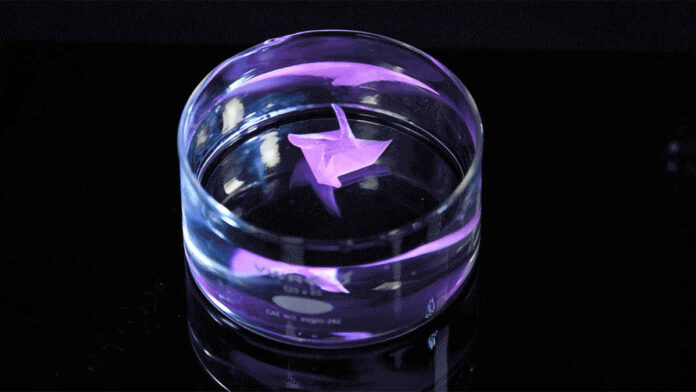Researchers from Harvard succeeded to design an eco-friendly and innovative material for 3D printing. SEAS (Harvard John A. Paulson School of Engineering and Applied Sciences) researchers used keratin from leftover wool when producing the material. Biocompatible and reshapable material offers the possibility of application in various fields from smart textile to tissue engineering. It was supported in part by the Harvard University Materials Research Science and Engineering Center (MRSEC), under grant DMR-1420570 from the Nation Science Foundation. The research has been published in Nature Materials and co-authored by Luca Cera, Grant Gonzalez, Qihan Liu, Suji Choi, Christophe Chantre, Juncheol Lee, Rudy Gabardi, Myung Choi, Kwanwoo Shin and Kit Parker.
The material is made using keratin, a fibrous protein found in hair, nails and shells. The researchers developed the material by taking advantage of the shape-changing ability of the keratin, extracted from leftover Agora wool used in textile manufacturing. A postdoctoral fellow at SEAS and first author of the paper, Luca Cera said that this two-step process of 3D printing the material and then setting its permanent shapes allows for the fabrication of really complex shapes with structural features down to the micron level. Cera stated that this makes the material suitable for a vast range of applications from textile to tissue engineering.
The keratin sheets produced with 3D printing
A single chain of keratin is arranged into a spring-like structure known as alpha-helix. Two of these chains twist together to form a structure known as a coiled coil. Many of these coiled coils are assembled into protofilaments and eventually large fibers. When a fiber is stretched or exposed to a particular stimulus, the spring-like structures uncoil, and the bonds realign to form stable beta-sheets. The fiber remains in that position until it is triggered to coil back into its original shape. To demonstrate this process, the researchers 3D printed keratin sheets in a variety of shapes. They programmed the material’s permanent shape (the shape it will always return to when triggered) using a solution of hydrogen peroxide and monosodium phosphate.
In an experiment, one keratin sheet was folded into a complex origami star as its permanent shape. Once the memory was set, the researchers dunked the star in water, where it unfolded and became malleable. From there, they rolled the sheet into a tight tube and once dry, the sheet was locked in as a fully stable and functional tube. To reverse the process, by putting the tube back into water, they provide it unrolled and folded back into an origami star.
The Tarr Family Professor of Bioengineering and Applied Physics at SEAS and senior author of the paper; Kit Parker said that whether you are using fibers like this to make brassieres; whose cup size and shape can be customized every day; or you are trying to make actuating textiles for medical therapeutics, the possibilities of Luca’s work are broad and exciting. Parker told; “We are continuing to reimagine textiles by using biological molecules as engineering substrates like they have never been used before”.

Can be a solution to the waste problem in fashion
The research is expected to help the broader effort of reducing waste in the fashion industry; one of the biggest polluters on the planet. Already, designers such as Stella McCartney are reimagining how the industry uses materials, including wool. Kit Parker explained that with this project; they had shown that not only can they recycle wool but they can build things out of the recycled wool that have never been imagined before. Stating that the implications for the sustainability of natural resources are clear, Parker noted; “With recycled keratin protein, we can do just as much; or more than what has been done by shearing animals to date and; in doing so, reduce the environmental impact of the textile and fashion industry”.
